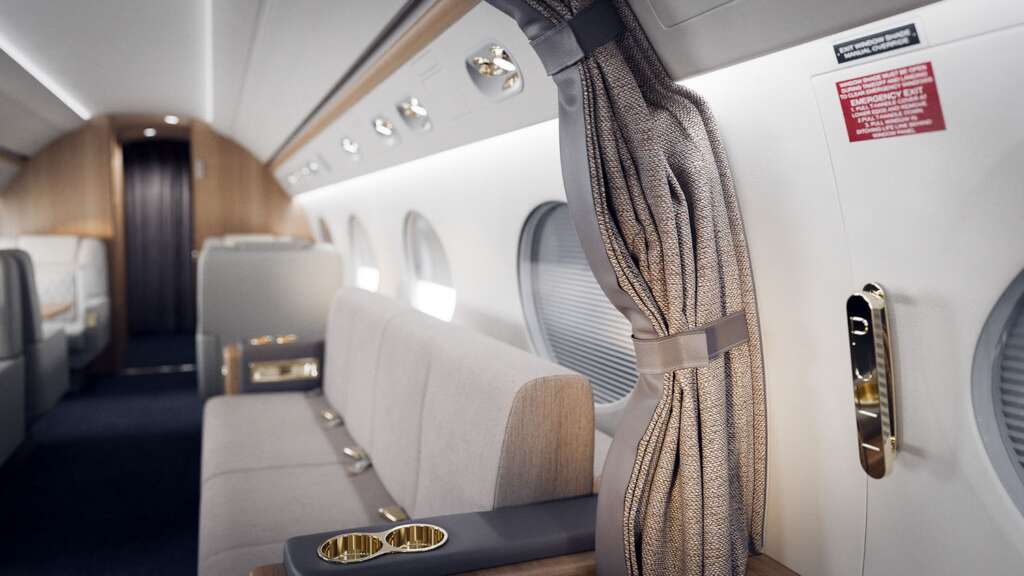In the world of business aviation, the aircraft interior is more than a space—it’s a reflection of identity, lifestyle, and functionality. For high-net-worth individuals and corporate clients, every inch of cabin real estate must deliver purpose and personality. Capturing and delivering these expectations in business jet interior projects is both an art and a science.
Based on years of experience in business aviation and luxury design, here are seven essential strategies that elevate customer experience, reduce friction, and lead to interiors that delight, impress, and function flawlessly.

Deep Initial Consultation and Needs Assessment
The foundation of a successful cabin project starts well before any sketch is drawn or material is sourced. It begins with listening.
Understanding how the client uses the aircraft—whether for business travel, family holidays, international commutes, or onboard entertaining—shapes every downstream decision. Are they traveling solo or with a team? Do they need sleeping accommodations? Will they be hosting meetings or expecting in-flight connectivity for productivity?
Beyond the technical and functional, explore the emotional:
- What does comfort mean to them?
- Do they have brand or design inspirations from homes, cars, or yachts?
- Are there cultural preferences or personal habits that might influence design decisions?
- The goal is to translate abstract ideas into a tangible interior vision from day one.
A Collaborative, Iterative Design Process
Gone are the days of presenting a finished design and hoping it resonates. Today’s best projects are built on a fluid, collaborative design process that evolves through regular dialogue.
Clients want to see, touch, and feel what they’re choosing—so bring the vision to life through 3D renderings, material samples, color boards, and mock-ups. While physical models remain powerful tools, many clients are now embracing virtual mockups—or hybrid solutions that blend physical elements with virtual experiences, often through the use of VR.
These touchpoints not only help clients visualize the final product but also deepen their trust in your process. Iteration is key. Each round of feedback refines the vision. A designer’s expertise shines not just in creativity but in guiding choices that strike a balance between aesthetics, feasibility, and long-term satisfaction.
Clear Communication and Transparent Reporting
Interior projects are complex, involving many players—designers, engineers, OEMs, suppliers, certifying bodies—and countless decisions. For clients, the experience should still feel seamless.
Establish clear touchpoints: regular updates, milestone reviews, and detailed documentation. Whether it’s a change in seat recline angle or a newly discovered supply chain delay, keeping the client informed avoids surprises and builds credibility.
Be honest and specific about what’s possible, what isn’t, and why. Especially when custom requests intersect with aviation regulations, timelines, or cost implications, clarity is essential. A well-managed expectation is better than an unmet one.
Customization and Flexibility
Personalization is not just a selling point—it’s an expectation.
From seat stitching and cabin lighting to hidden storage or bespoke galley layouts, each choice should align with how the client lives in their jet. It’s not only about opulence; it’s about practical luxury that works at 41,000 feet.
Small touches—like intuitive stowage for devices, climate zones for passenger comfort, or layout adaptations for pets or children—can make a world of difference. Clients value solutions that marry elegance with functionality.
True customization also means being flexible as the client’s vision evolves. Adaptability is a competitive advantage.
Managing Expectations Around Technology and Certification
One of the more misunderstood aspects of business jet interiors is the gap between consumer technology and certified aviation solutions.
Clients may expect their aircraft to mirror the latest in-home tech—OLED screens, smart lighting, or AI assistants—but certification requirements in aviation often mean slower adoption. The key here is education.
Help clients understand the regulatory landscape and work with engineering teams to find compliant alternatives that meet the spirit of their desires, even if not the exact spec. Be proactive in proposing roadmaps for future upgrades where possible.
Timelines for new or exotic tech integrations should be realistic and explained with full transparency. Surprises here can quickly sour an otherwise smooth project.
Assign a Dedicated Customer Representative
A single point of contact—who fully understands the client’s preferences and project goals—is invaluable. Whether embedded within your organization or representing the client externally, this role ensures continuity and reduces friction.
This representative serves as the client’s voice during internal meetings and supplier discussions, translating complex technical updates into plain language and ensuring decisions reflect the client’s priorities.
It’s about trust and continuity. With one consistent advocate, the client feels heard—and the project stays on course.
Post-Delivery Feedback and Long-Term Support
Delivery day is not the finish line; it’s the start of a long-term relationship.
Gathering client feedback after delivery not only shows commitment to excellence, but also yields insights for future projects. Were there any unexpected pain points? Did something not meet expectations? Address these quickly and thoroughly.
Moreover, offering proactive support—whether for training, maintenance questions, or tech updates—demonstrates long-term value. Many clients will undertake multiple aircraft projects in their lifetime. Their experience today shapes tomorrow’s opportunity.
In Summary
Delivering exceptional business jet interiors requires far more than beautiful design—it’s about partnership, precision, and empathy.
From the earliest needs analysis to post-delivery support, the best outcomes are born from collaboration, clear communication, and a flexible mindset that respects both luxury expectations and aviation realities. When executed well, the result is more than a cabin—it’s a personalized sanctuary above the clouds.
